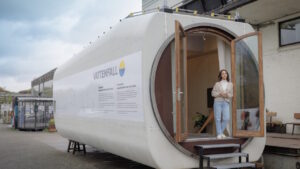Australia’s complex tangle of electricity grid connection, congestion and system strength issues is quickly becoming a major barrier to the next big wave of renewable energy investment, a panel of industry insiders has warned.
In a webinar hosted by the Clean Energy Council on Tuesday afternoon, panellists ranging from CEFC CEO Ian Learmonth to Octopus Investments managing director Sam Reynolds said increasing uncertainty around connection and commissioning of large-scale solar and wind energy projects were acting as a major dampener on new investment in the sector.
The webinar, which featured a keynote address from the head of the Macquarie-owned Green Investment Group, Mark Dooley, heard about the “tremendous opportunity” for investment in the renewable energy sector as development ramps up to meet Paris climate targets.
“We’ve got to build 1.6 times the existing generation fleet between now and 2050,” Dooley said. “In terms of volume of investment, you can see [in the chart below] it’s $US10.3 trillion needs to happen through these next three decades.”
To attract its share in these trillions, Australia will have to convince investors it can provide what Dooley describes as “enabling grid infrastructure” – that is, a network that can be relied upon to support and export new renewable energy generation, once it is built.
Currently, however, this crucial piece of the renewables investment puzzle is letting the side down. Just this week, another nine large-scale solar farms in North Queensland with a total capacity of more than 712MW were warned that their output could be cut to zero under certain circumstances due to emerging “system strength” issues in that part of the state.
Similarly, five solar farms in Victoria and NSW had their output reduced by half for more than seven months after detailed modelling identified potential “voltage” issues in the West Murray region of the grid – an issue that was finally resolved in April.
And earlier this month, Victoria’s big Dundonnell wind farm was told it would not be able to reach full commissioning under its anticipated timeline because of new issues identified in its part of the grid. The owner, Tilt Renewables, has now flagged a significant fall in revenue and profits because of the delay.
For future investors and developers, the problem is firmly on the radar. “In Australia, grid risk is key,” said Reynolds, whose Octopus Investments launched in Australia in 2018 and made its first move with the 333MW Darlington Point solar farm Griffith in NSW in early 2019 – the Group’s 161st solar project, all told.
“For us, grid risk is even more important than PPAs. …You have to try and price in congestion, curtailment, and then connection risk.
“We know more about synchronous condensers than we probably ever did, or maybe even ever wanted to, we now have two in Australia. So they’re some of the challenges.”
Angela Karl, a partner at the Queensland government-owned investment group QIC, said Australia had already seen a significant reduction in investment in large-scale renewables due to number a factors including connection and commissioning uncertainty and delays and curtailments.
“What the ongoing, almost rolling curtailments are doing to equity investor appetite is just increasing the risk associated with those investments. So the first outcome of that is the higher cost of capital, which ultimately flows through to a higher cost of energy for consumers,” Karl said.
A key part in reinvigorating the interest of institutional investors, Karl said, would be to re-establish some form of connection and commissioning certainty, including “a greater obligation or stronger partnership with the …distribution companies to ensure deliverability of connection services.”
“There is a huge amount of capital out there that could be available to invest in the Australian energy sector and our transition to a low carbon energy market… It’s all about reducing the risk and increasing the certainty of cash flow,” she said.
“If we want to continue to encourage the lowest-cost infrastructure money into the sector, which brings LCOEs (levelised cost of energy) down, then I think there’s a view that some of these risk signals around the grid, in particular, need to be dampened in order to bring that low-cost capital in,” said Andrew Smith, the global head of energy at NAB.











